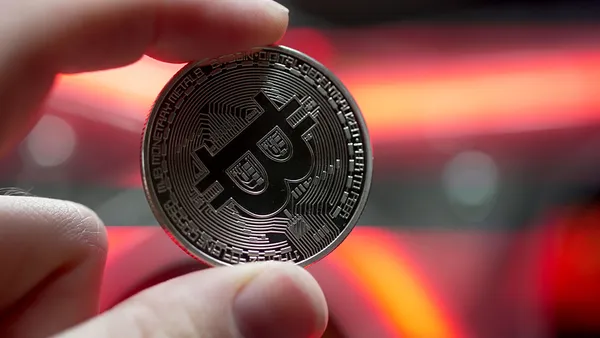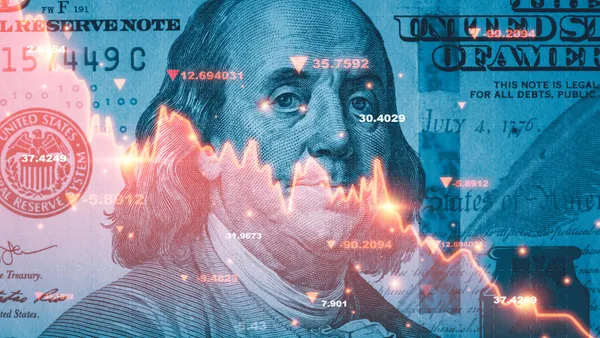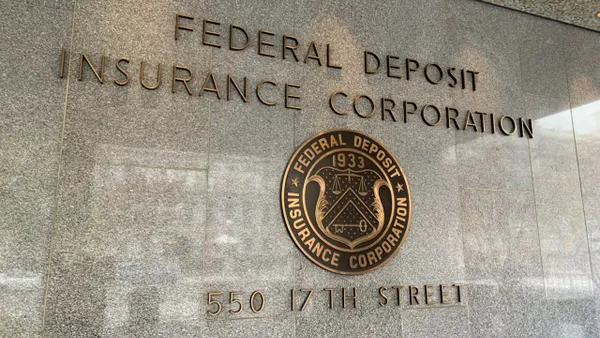This year, both traditional banks and newer entrants have experienced what seems like years of evolution overnight. In-person banking all but disappeared in the early days of the COVID-19 pandemic, leading traditional banks to ramp up digital channels to serve customers. But no matter whether a financial institution has been in business for decades or is a digital-first disruptor, one thing is certain: In this time of worry and uncertainty, customer-centricity is more important than ever.
The banks that are elevating customer experience are addressing these challenges across the board, making it easier to open accounts, transfer money, and make digital, contactless payments — all while keeping fraud at bay. The transformation to digital platforms has been evolving over the last decade, of course. "But, as many have noted, we had five years' worth of change happen in six months," says Al Ko, CEO of Early Warning Services, LLC, the network operator of Zelle® that also provides actionable intelligence to help financial institutions fight fraud, mitigate risk and better serve their customers.
Opening more doors
Among the most notable changes resulting from the pandemic is the way accounts are opened. Before the onset of COVID-19, only about 30% of new account openings occurred online or on a mobile app, according to a study from J.D. Power. But then the pandemic hit, and most bank branches had to close. ABA Banking Journal reports that online account opening has more than doubled at most banks since last year. Even now, as more brick-and-mortar locations are reopening, consumers are still opting to open accounts using digital channels. The challenge for banks—especially those just beginning their digital journey—is how to create a more secure, swift and simple process to open accounts.
A crucial first step is verifying—in real time—that the person applying to open the account is who they say they are. This onboarding process is a moment of truth, Ko notes. Financial institutions leveraging services powered by robust data and innovative machine learning tools are able to verify an applicant’s true identity faster than ever and provide the appropriate account types, privileges, and limits right from the start. An institution’s ability to leverage these tools can be the difference between a life-long customer and a lost opportunity.
"When you’re in a branch and someone is helping you with the paperwork, the chances are very high that you're walking out with a completed checking account," he adds. Digital checking account openings, on the other hand, have an abandonment rate up to 45%, according to a report by Aite Group, a financial services research and consulting firm. "If the digital experience is complicated or requires the customer to switch to too many screens, that customer is going to abandon the process and try something else," Ko adds.
Staying a step ahead of fraud
One of the more dismal developments of the pandemic is the rising rate of fraud. For example, FIS reported earlier this year that the dollar amount of attempted fraudulent transactions rose 35% from April 2019 to April 2020. And the impact of this growing pain point is exacerbated by the 78% increase in card-not-present activity from March to April 2020 (Worldpay from FIS’ FraudSight data)– and felt by financial institutions of all sizes. In a recent report on new account onboarding by Aite Group, 75% of financial institutions surveyed said that among their top three pain points is first-party fraud. With fraud rates rising during the pandemic across the board, synthetic identity fraud, in particular, is projected to reach more than $4.1B by 2023 according to Aite Group research.
That’s a difficult spot for banks to be in, Ko says, because a good customer experience involves making funds available as quickly as possible. But making the wrong decision can put a bank, and its customers, potentially at risk. The institutions that are addressing this challenge the best are able to get the broadest view of risk possible. This includes understanding customers’ financial behavior history more holistically – as well as assessing transaction-related risk, including verifying if the customer is authorized to transact on the account, validating the status of an account and predicting the likelihood that the deposited item will clear. By doing this quickly and accurately, banks help ensure that customers have access to needed funds and that the transaction is completed safely, whether the customer is in-person, online, or using a mobile device.
Modernizing payments
So much of life has changed during COVID-19, including the way we pay for things. Axios reports that nearly half of all consumers say they have reduced their use of cash since the pandemic began. With the pandemic and social distancing measures driving rapid adoption of contactless mobile payments, P2P payment platforms are experiencing explosive growth. Early Warning recently reported that the Zelle Network® processed more than 1 billion payment transactions over the last 12 months. In its most recent quarter ending in September, the number of transactions increased 17% over the previous period.
According to research by Zelle, as published in its Consumer Payment Behaviors September 2020 report, nearly 50% of those surveyed responded that they are using P2P (person-to-person) payments more frequently since the start of COVID-19, while 77% rated their experience of using P2P as ‘very easy’. This rapid growth in P2P has shown added benefits for financial institutions who offer a payment experience within their digital properties. Ko notes that more digitally engaged customers are driving higher value for banks, in the form of increased revenue, product holdings, and long-term loyalty.
Ko believes the shift to digital payments is here to stay. "Even after the worst of the pandemic is over, I don’t think we’re going to see people use cash and checks the way they did before," he says. "Technology is making it fast and easy to pay online or from a mobile app. Business Insider Intelligence forecasts that more than half (55.1%) of the U.S. population will use a mobile banking app this year. Zelle helps trusted mobile banking apps do more for those financial institutions' customers. Ultimately, once people have experienced the ease of doing things the new way, they will never go back."










